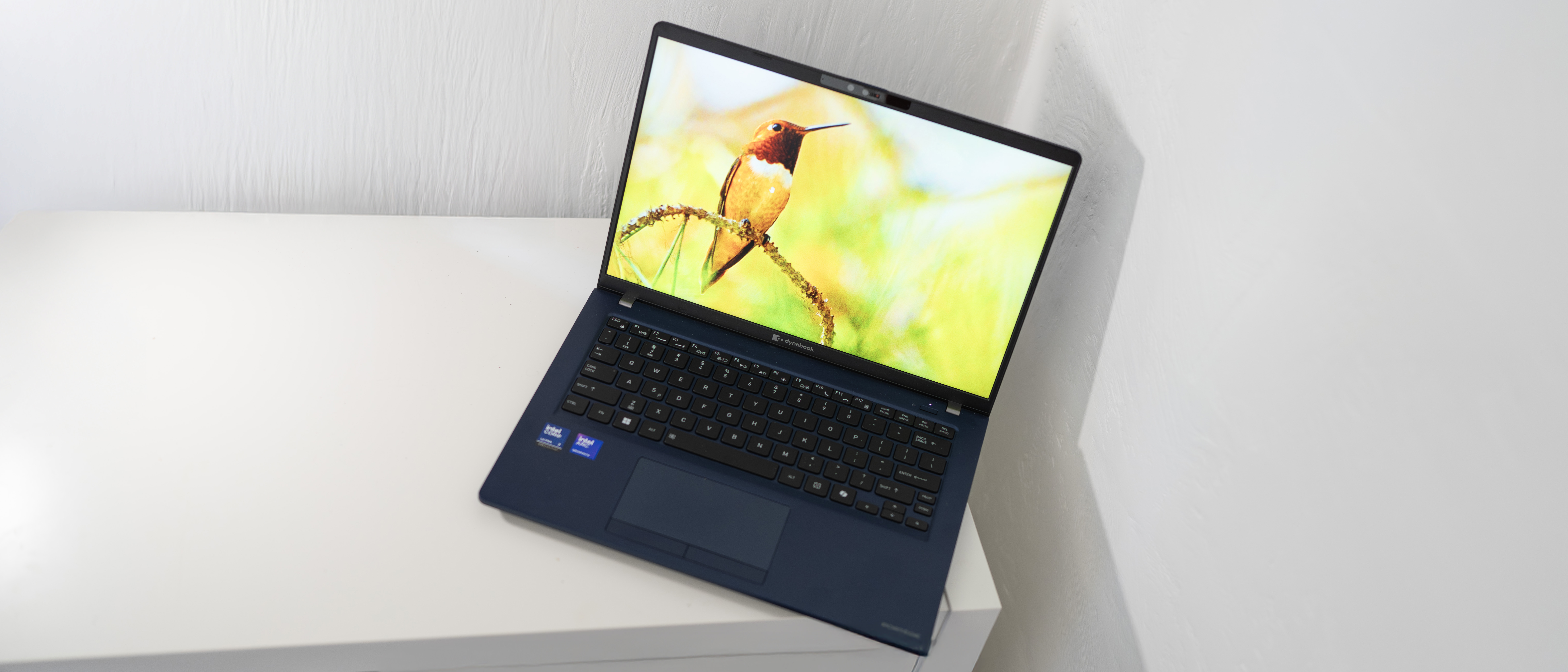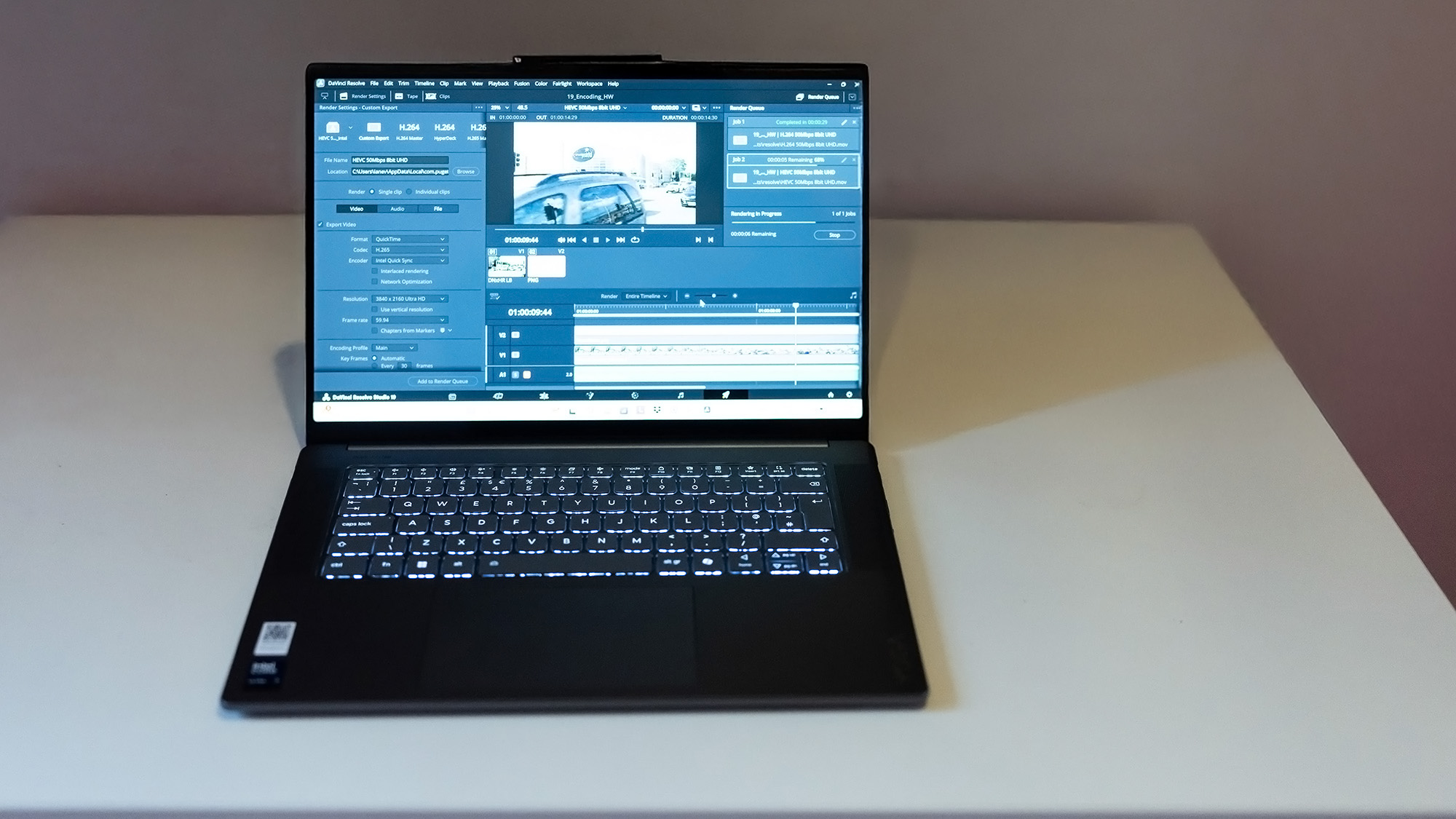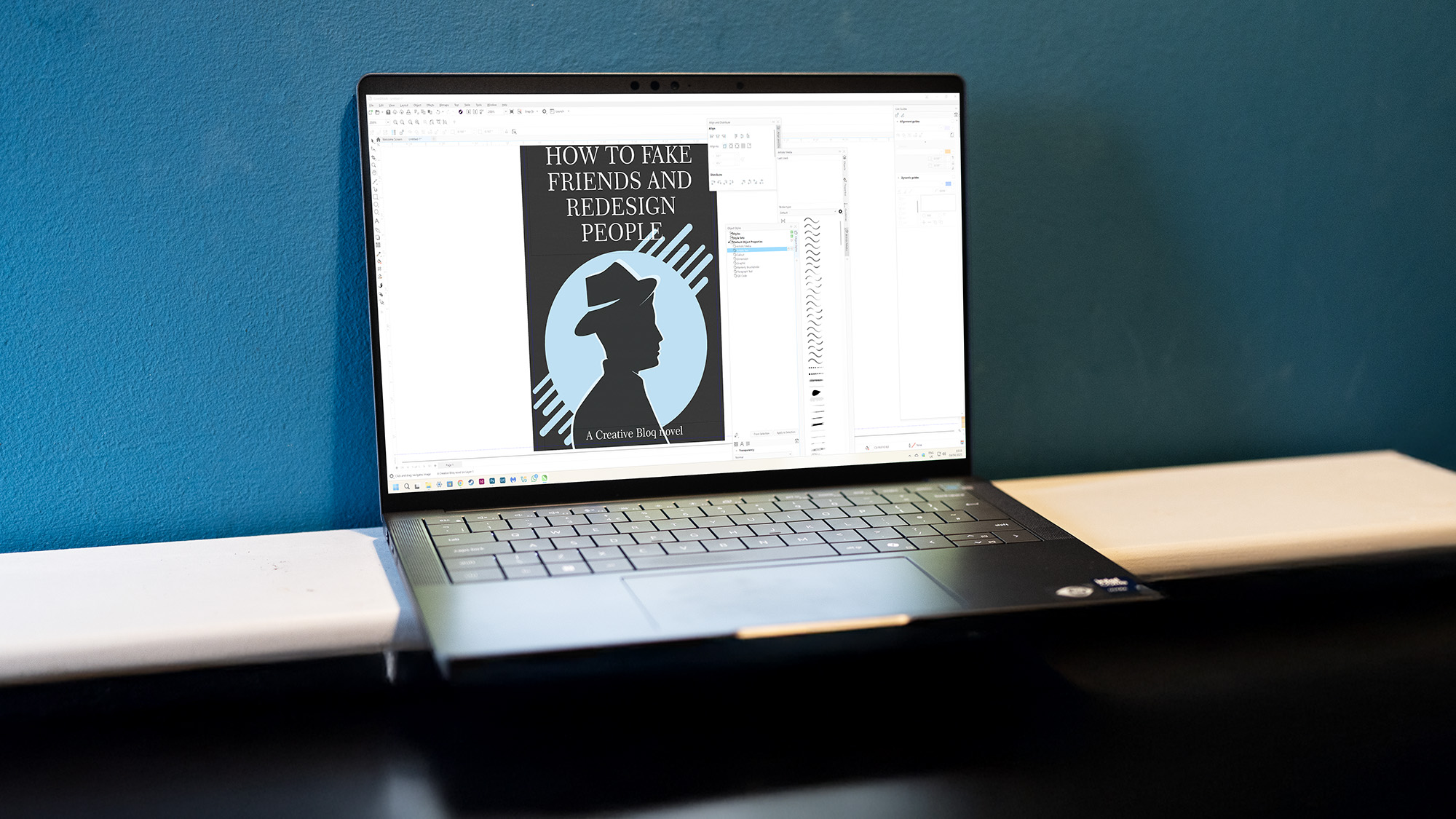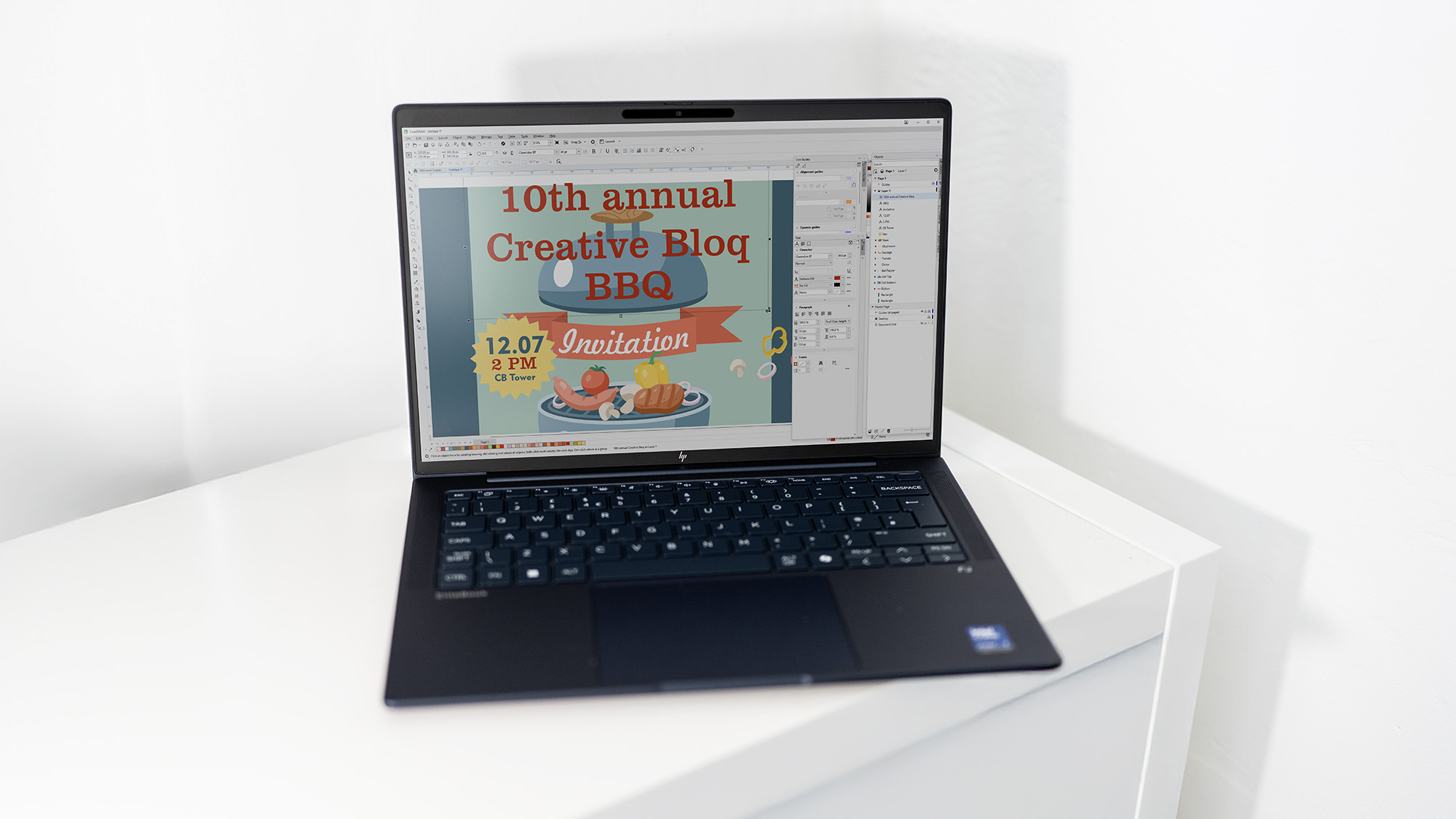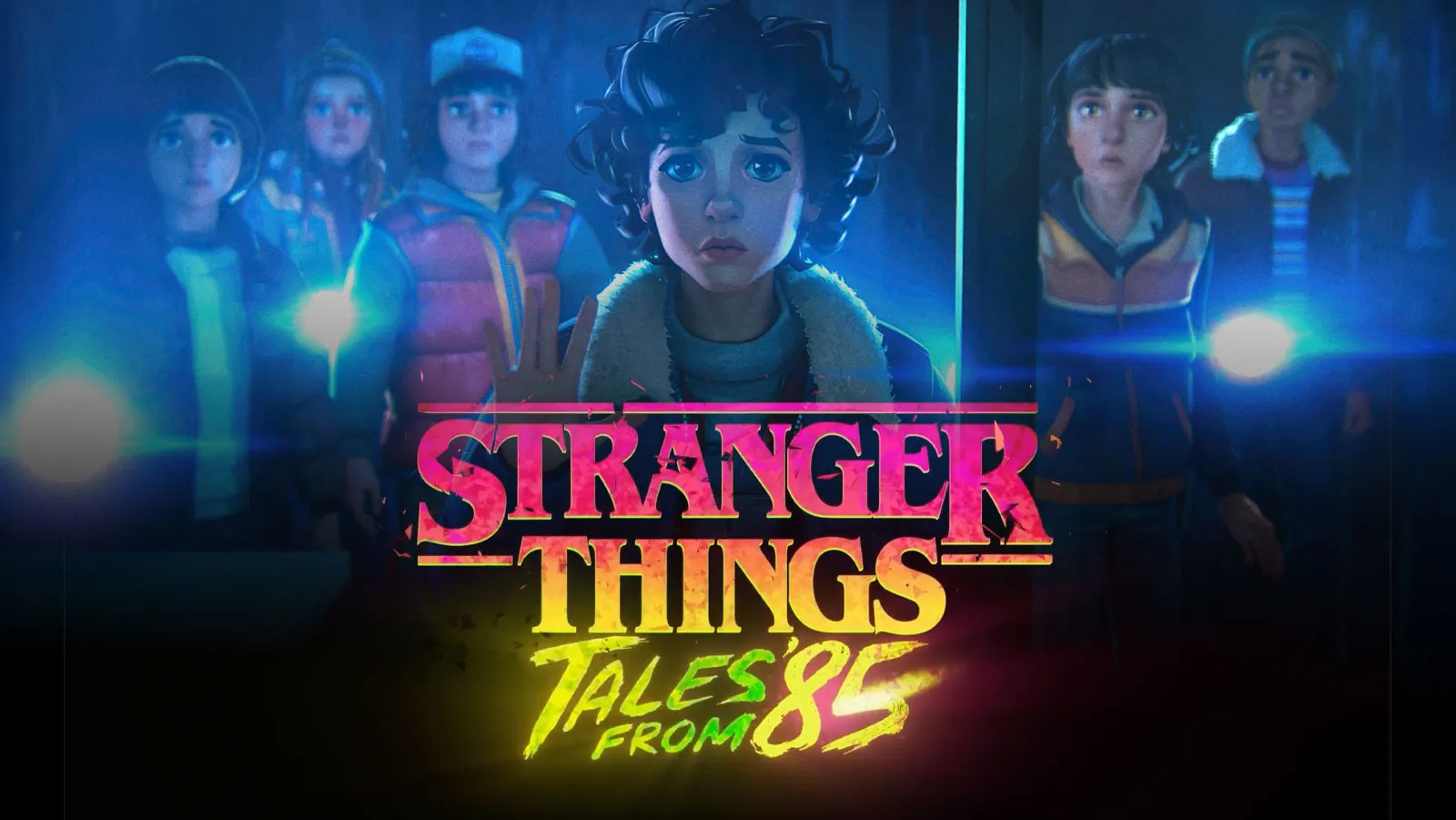Our Verdict
The Dynabook Portégé Z40L-N is a thoroughbred business laptop, from its slim and light design to its long battery life. This means it lacks the brute graphics power that many creatives require, but there's enough here to make a useful, versatile laptop that can handle images and video as well as office tasks.
For
- Very light
- Replaceable battery
- Decent endurance
Against
- Cheaper options exist
- Integrated GPU only
Why you can trust Creative Bloq
Dynabook is a Japanese company that’s owned by Sharp but which used to be part of Toshiba, and as such has a long history of making laptops, all the way back to the Toshiba T1000 in 1987. Dynabook’s modern laptops are a little more refined than the bulky plastic bricks of the ‘80s, however, and come with the latest Intel processors and Thunderbolt 4 ports.
It’s a very business-oriented device, with the potential to be a workhorse, but there's another trick up the DynabookPortégé Z40L-N’s sleeve too: a user-replaceable battery in a tough but light magnesium alloy chassis, up to a four-year warranty, and support for all kinds of software security features. But does it have enough oomph to slug it out among the best laptops for photo-editing, or enough features for value to make it a good future-proof choice for your next student laptop? I've had it for a few weeks to find out.
Key specifications
CPU: | Intel Core Ultra 7 258V |
NPU: | Intel AI Boost |
Graphics: | Intel Arc 140V (integrated) |
Memory: | 32GB LPDDR5X-8533 |
Storage: | 1TB SSD, MicroSD |
Screen size: | 14in |
Screen type: | IPS |
Resolution: | 1,920 x 1,200 |
Refresh rate: | 60Hz |
Colour gamut (measured): | 442 nits |
Brightness (measured): | 77% P3 |
Ports: | 2x Thunderbolt 4, 2x USB 3.2 Type-A, 1Gbps Ethernet, HDMI 2.1, 3.5mm audio |
Wireless connectivity: | Wi-Fi 7, Bluetooth 5.4 |
Dimensions: | 312 x 223 x 19mm |
Weight: | 960g |
Design, build and display
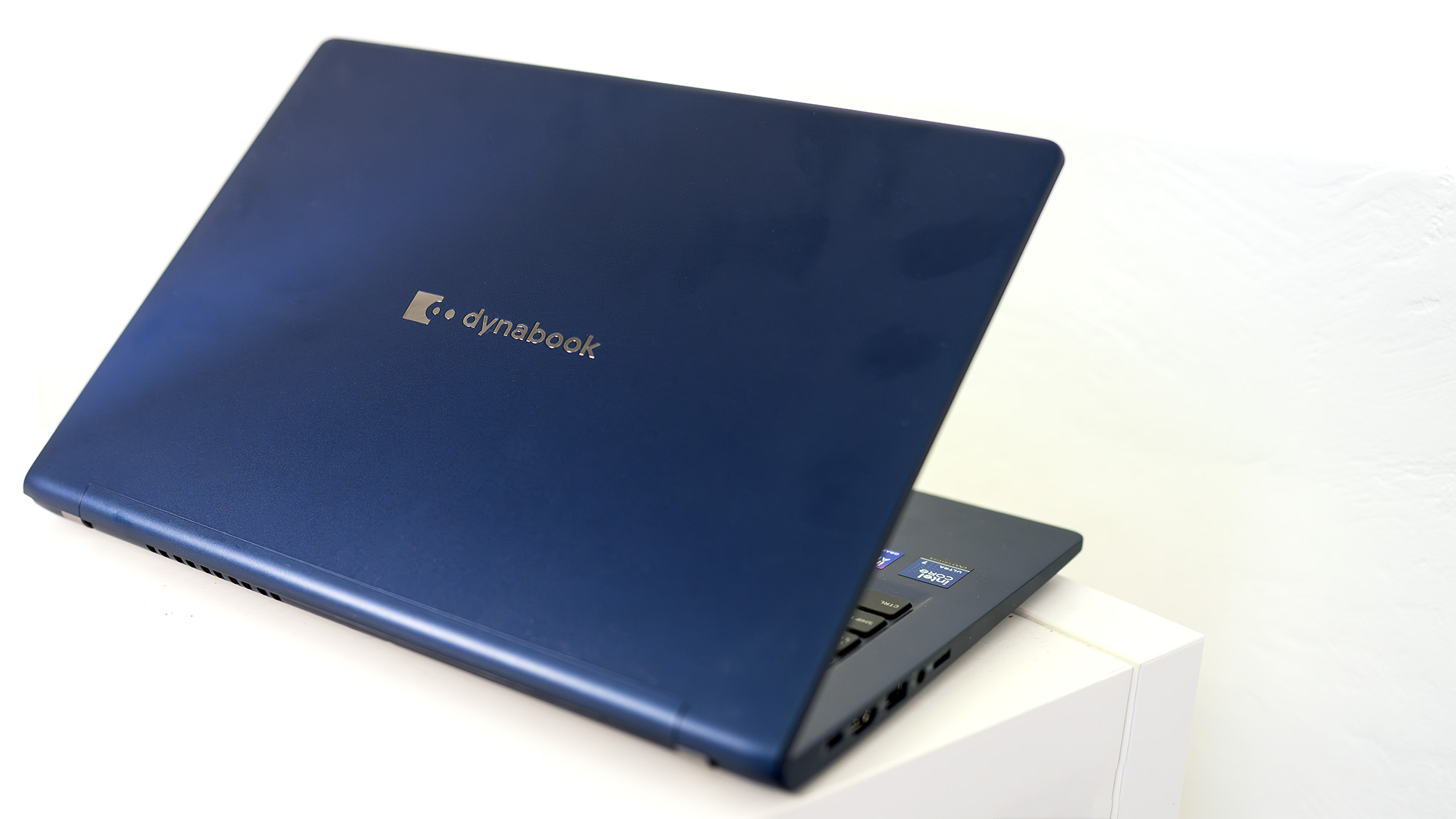
• Very light
• Replacable battery
The Z40L-N comes in a lovely shade of blue, but otherwise is a standard laptop shape. The hinge is capable of folding it flat, but the real standout thing about it is how light it is. At less than a kilo, this 14-incher weighs less than the ASUS Zenbook A14 and the 13-inch MacBook Air. The price you pay for this is that it feels a bit flimsy, almost like plastic, though w're assured it's all magnesium alloy and it comes with claims about military-spec drop testing that we’re unable to replicate at a decidedly non-military website.
This makes it a good choice for slinging in your bag and taking with you, but the laptop’s other claim to fame is its replaceable battery, and there's a large warning sticker underneath telling you not to eat the power cell, in case you were tempted.
Undo two screws on the bottom of the laptop, and you’ll be able to remove part of the casing. All the screws are standard Phillips-head ones, so it should be possible to open it up further, though Dynabook doesn’t mention if there are user-upgradable parts inside. The battery can be disengaged with a single clip, and comes out quite easily. It’s surprisingly small, as we’ve assumed for some time that every last nook and cranny inside a laptop was being filled with battery in service to ever-extending endurance times.
Battery degradation is an issue with laptops, however, especially if you want one that’s going to last more than a few years, so being able to swap it out like this is going to prevent at least some of them from going in the bin. It’s not really a way to conveniently carry a spare, as undoing the screws in the middle of the working day may not be possible, and one of the best power banks might be a better idea instead. A quick web search of the battery’s serial number uncovers availability from multiple suppliers.
Daily design news, reviews, how-tos and more, as picked by the editors.
The screen on the model provided to Creative Bloq is a 16:10 non-touch IPS panel with a bit of a low resolution in these days of 3K OLEDs, but it’s plenty bright enough at 442 nits and puts out a decent colour gamut: 99% of sRGB, 78% of Adobe RGB, and 77% of P3. We’ve seen better, but we’ve also seen worse.
Design score: 4/5
Features
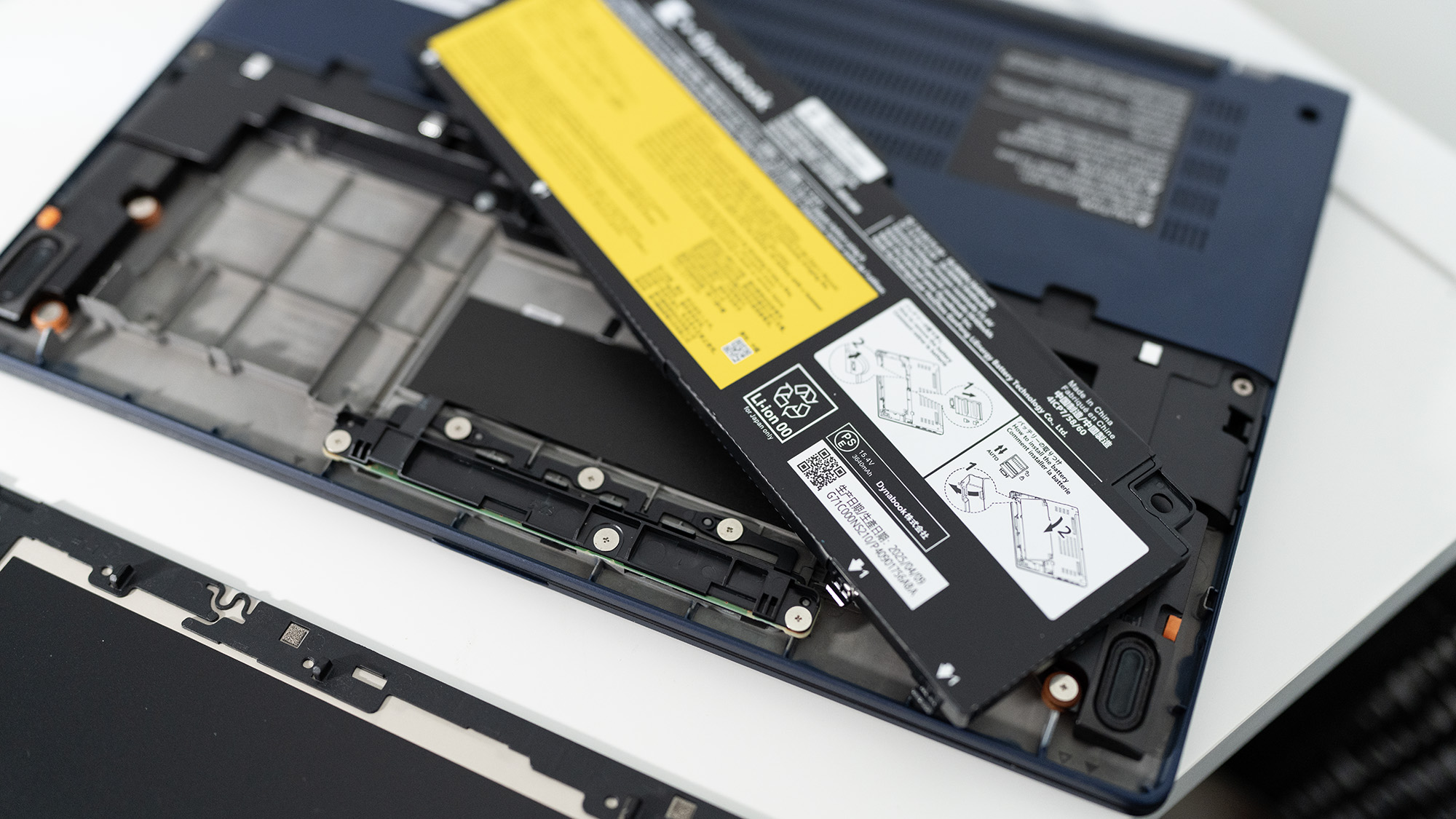
• Lots of ports
• Trackpad doesn't click
The USB-C ports on the Z40L-N are Thunderbolt 4, which gives them versatile fast data transfer and means you can charge through them too. There's a full-size HDMI for your external monitor or projector, and gigabit Ethernet for those times the Wi-Fi 7 wireless connection isn’t going to cut it.
It’s a broad port selection, topped off by a couple of USB-A ports and a microSD card slot, plus the usual 3.5mm port for your headset. The webcam comes with a shutter and is Windows Hello compatible, and the presence sensors mean you can set it to lock the machine automatically when you walk away, and dim the screen or send a notification if it detects a second face - that of an intruder trying to get an eyeful of your work - in the frame.
The trackpad is an unusual specimen, in that it responds to taps but not clicks - there's no mechanism for it to be depressed. Instead, there are two physical buttons below it, a bit of a throwback to a bygone age but which we note are also present on some Lenovo Thinkpads, albeit at the top of the trackpad.
The pad is smaller than those we’ve seen on other laptops - though this is a compact 14-inch model - and the keys themselves are too. There's been no attempt to shoehorn a numpad in at the side of the white-backlit keyboard, but some of the keys are particularly small - Pg Up and Pg Dn are tiny little things crammed in next to the right-hand Shift.
Some of the blame can be laid at the foot of the Copilot key that’s sprouted on the bottom row (and this is one of the first laptops that has offered to set up Windows Recall, so bear that in mind if you don’t want screenshots of your work captured) but keyboard design on small laptops would be a fine balancing act even if it wasn’t there.
Feature score: 4/5
Benchmark scores
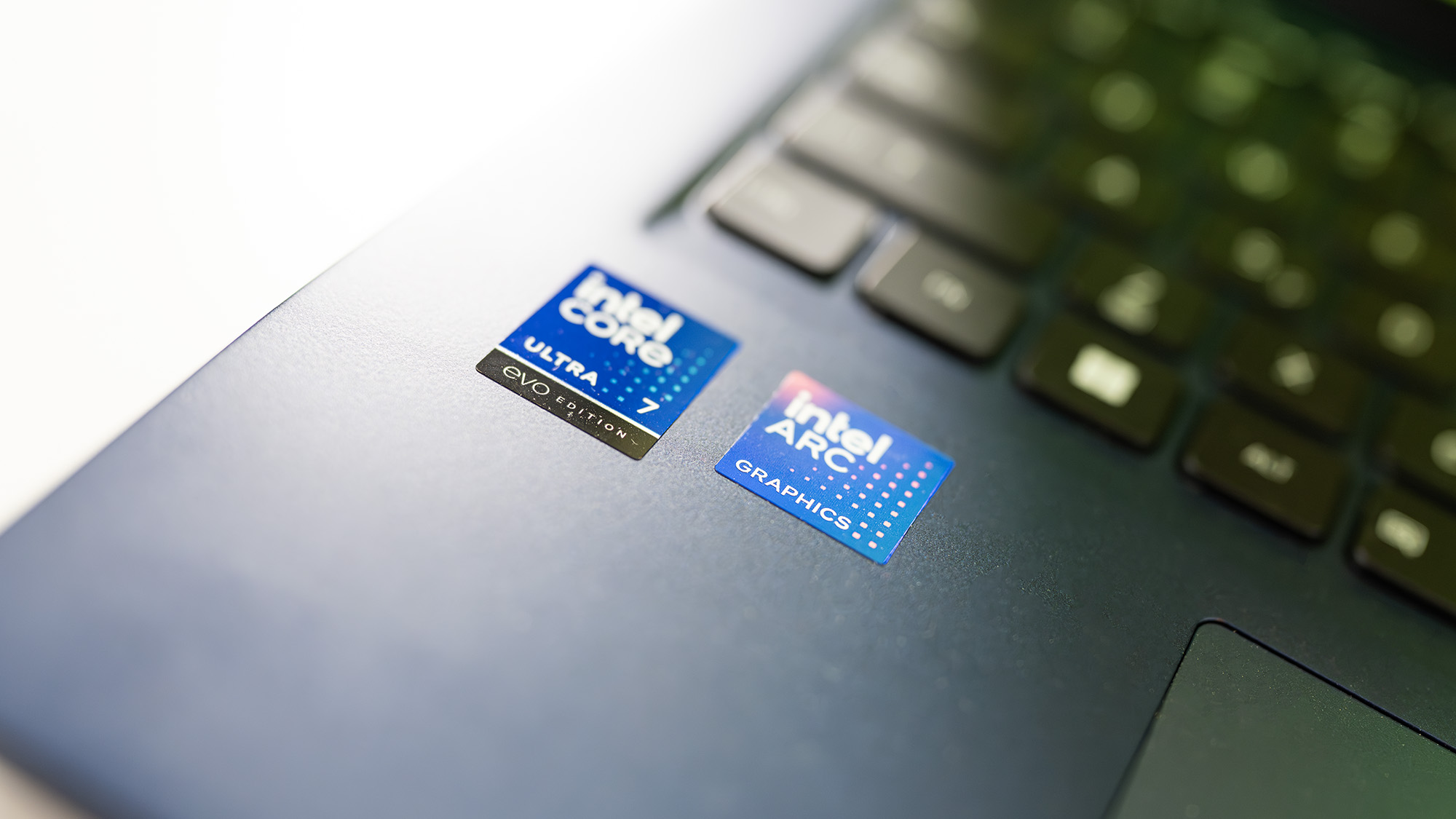
We test every one of our laptops using the same benchmarking software suite to give you a thorough overview of its suitability for creatives of all disciplines and levels. This includes:
• Geekbench: Tests the CPU for single-core and multi-core power, and the GPU for the system's potential for gaming, image processing, or video editing. Geekbench AI tests the CPU and GPU on a variety of AI-powered and AI-boosted tasks.
• Cinebench: Tests the CPU and GPU's ability to run Cinema 4D and Redshift.
• UL Procyon: Uses UL Solutions' Procyon software suite to test the system's ability for AI image generation in Stable Diffusion, its Microsoft Office performance and its battery life in a looping video test.
• Topaz Video AI: We use Topaz Video AI to test the system's ability to upscale video and convert video to slow-motion.
• PugetBench for Creators: We use the PugetBench for Creators benchmarking suite to test the system's ability to run several key tasks in Photoshop and Adobe Premiere Pro, as well as its performance when encoding/transcoding video.
• ON1 Resize AI: Tests the system's ability to resize 5 photos to 200% in a batch process. We take the total time taken to resize the images and divide by 5.
Performance
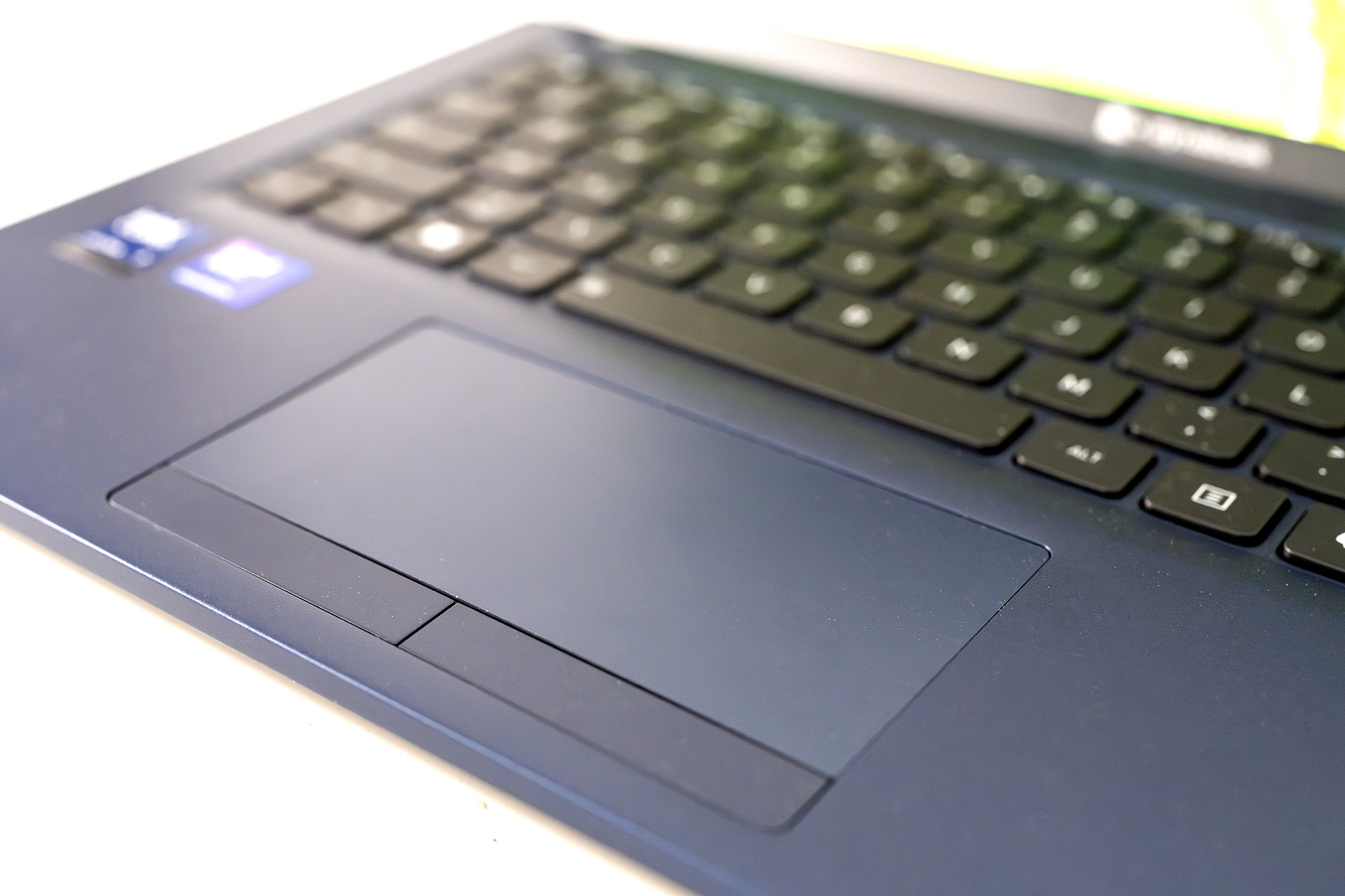
• Decent battery life
• Good 2D performance
As it uses the Intel Core Ultra’s integrated graphics chip, we weren’t expecting amazing feats of pixel-bending from the Z40L-N. None of the graphics solutions currently on the market is exactly ‘bad’, however, some are just more capable than others. We’ve seen the Arc 140V in plenty of other laptops, such as the HP Elitebook X G1i and Lenovo Yoga Slim 7i Aura Edition, where we’ve noted its suitability for everyday tasks and 2D work, including light video editing.
And so this business laptop proves it’s got what it takes for a certain amount of creative work - it’s more than possible to use Photoshop and InDesign on integrated graphics, Macs have been doing it for years, especially in the Intel era. It’s only when you start trying to manipulate a lot of 3D or decode several high-res video streams at the same time that GPU power becomes a real problem.
One thing we’ve also seen before from laptops that incorporate the Core Ultra 7 258V is exceptional battery life. The two machines linked just above can both manage more than 18 hours of use on a single charge, so my expectations were high for the Z40L-N, and I was interested to see if the removable battery made any difference. What I usually do is to leave it running a looping video test overnight, and just note down the amount of time it took the next morning (or around lunchtime, with some of them). Unfortunately, the Z40L-N couldn’t complete the test, throwing an error about an unavailable file just over three hours into testing. What I can report, however, is that 15 hours after it started, the laptop was still awake, managing to keep its screen on all night and well into the next day and only just beginning to complain about a lack of charge long after the sun had come up.
Now, while the screen being on is a major drain on a laptop’s battery, the fact the processor was sitting idle rather than running the testing app means it would have drained slightly faster if the laptop was doing some work.
In the benchmark tests, the Z40L-N sits very close to both the Elitebook X G1i and Yoga Slim Aura Edition, sometimes higher and sometimes lower. There's definitely a fan at work in the Dynabook, which kicks in whenever it’s asked to work a bit harder, such as when asked to run Photoshop and Premiere Pro. It’s not a harsh sound, more of a gentle rushing noise, and much of the time the laptop is very quiet in operation.
Performance score: 3/5
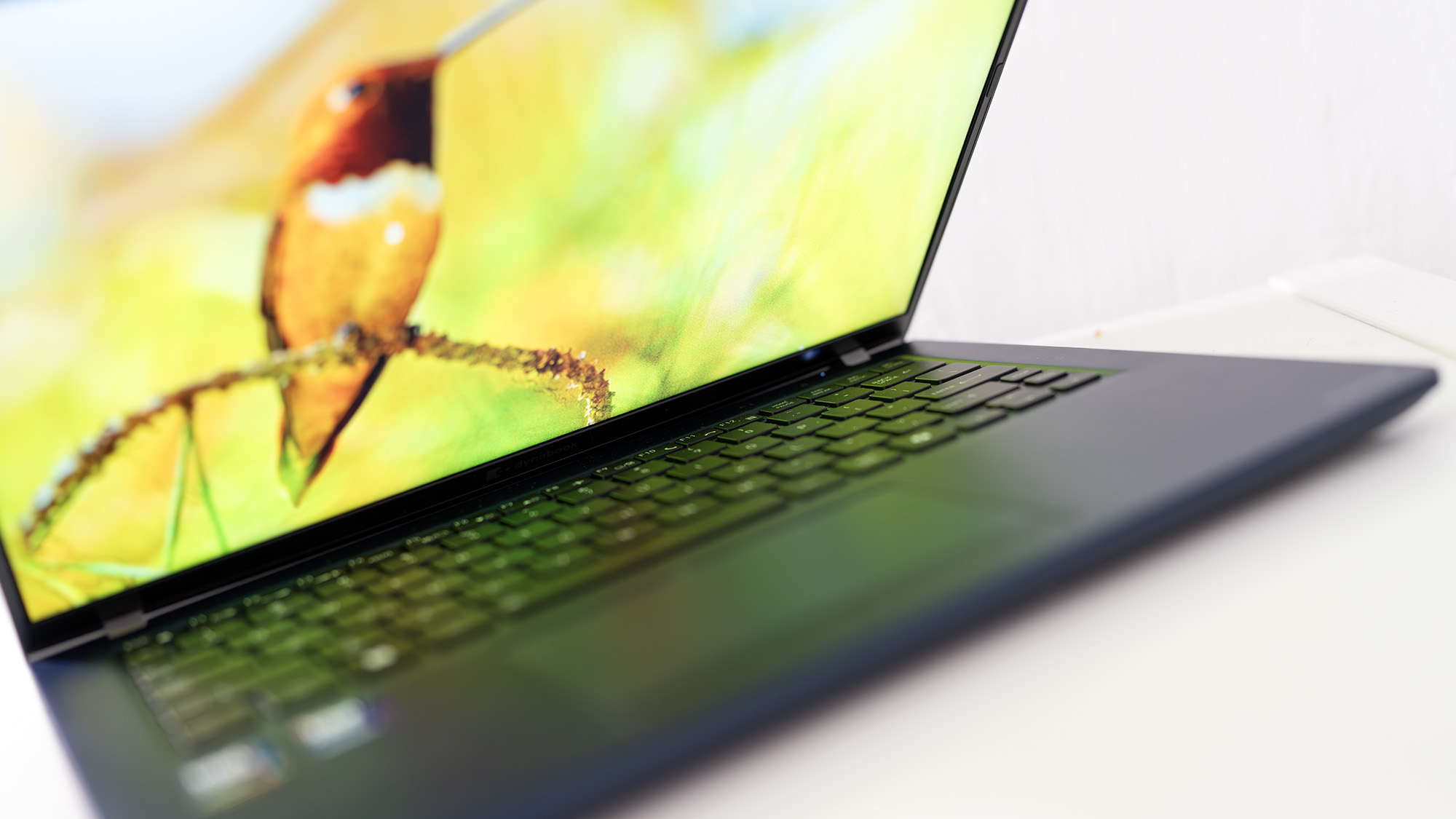
Price
A problem for the Dynabook is that at $2,199 it’s a bit more expensive than some of the competition. The 15-inch Lenovo Yoga Slim 7i Aura Edition is currently available for $1,389.99 with the same CPU and an HP OmniBook Ultra Flip 14 with a slightly lesser version of the Ultra 7 can be had for $1,599.99, though the Dynabook is a bit cheaper than the Lenovo ThinkPad T14s Gen 6 with the Core Ultra 7 258V, which goes for $2,329.
Value score: 3/5
Who is it for?
• Hybrid workers
There's enough power in the Ultra 7 for many creative tasks, and the Dynabook Z40L-N is extremely light, so perfect for carrying with you wherever you need to work from. The battery life is very good, and will likely get you through a full day of work, and it has excellent connectivity so you can plug into external monitors and fast storage at your desk, before whipping it away to the coffee shop.
Attributes | Notes | Rating |
|---|---|---|
Design: | Lightplastic build, metal underneath | 4/5 |
Features: | Plenty of fast ports | 4/5 |
Performance: | Does OK for integrated graphics | 3/5 |
Value: | There are a few cheaper options | 3/5 |
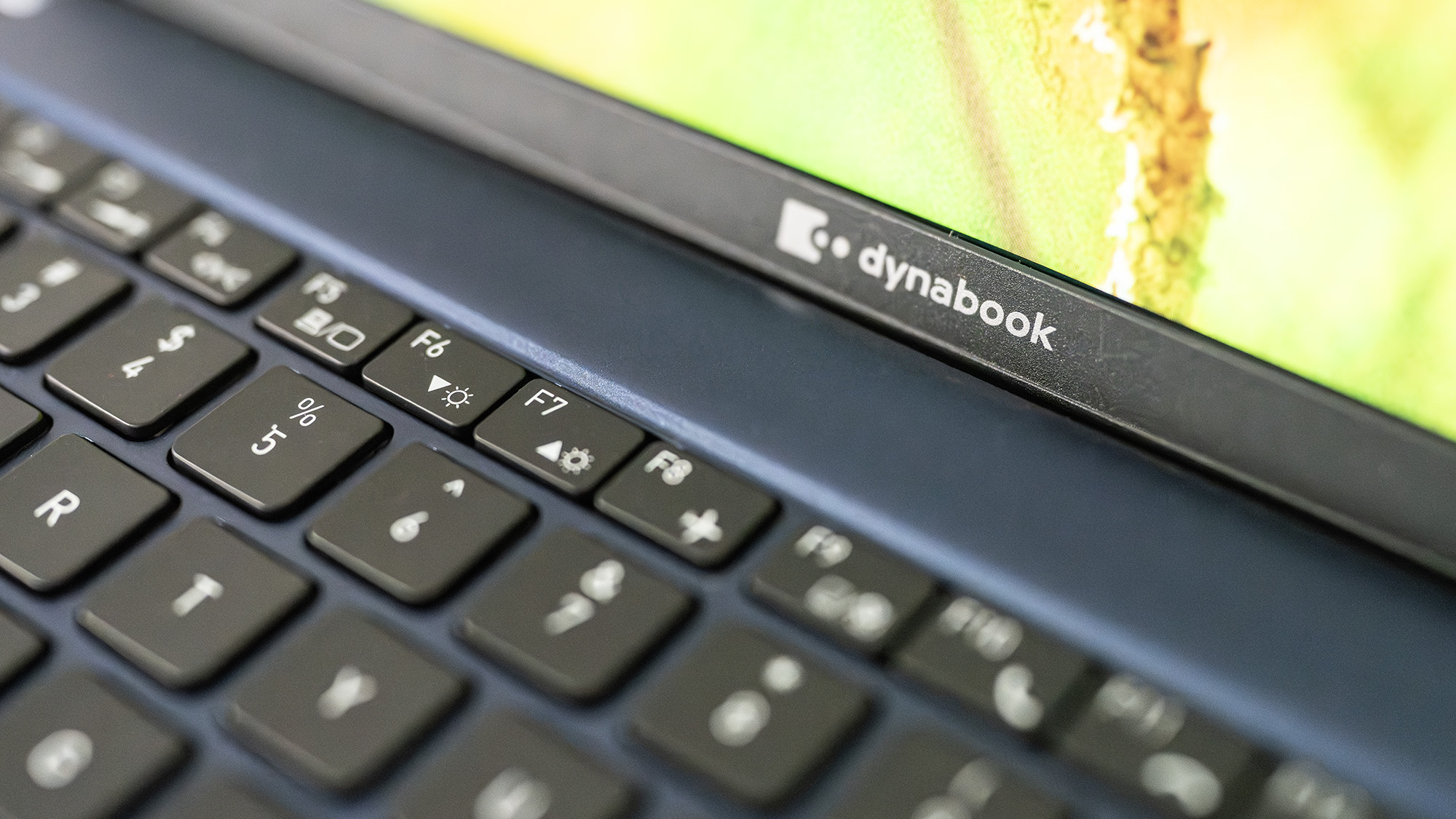
Buy it if...
- You like a light laptop
- You don’t need a powerful GPU
- The replaceable battery appeals
Don't buy it if...
- You like to render
- You want a higher-res OLED
Also consider
out of 10
The Dynabook Portégé Z40L-N is a thoroughbred business laptop, from its slim and light design to its long battery life. This means it lacks the brute graphics power that many creatives require, but there's enough here to make a useful, versatile laptop that can handle images and video as well as office tasks.

Ian Evenden has been a journalist for over 20 years, starting in the days of QuarkXpress 4 and Photoshop 5. He now mainly works in Creative Cloud and Google Docs, but can always find a use for a powerful laptop or two. When not sweating over page layout or photo editing, you can find him peering at the stars or growing vegetables.
You must confirm your public display name before commenting
Please logout and then login again, you will then be prompted to enter your display name.
